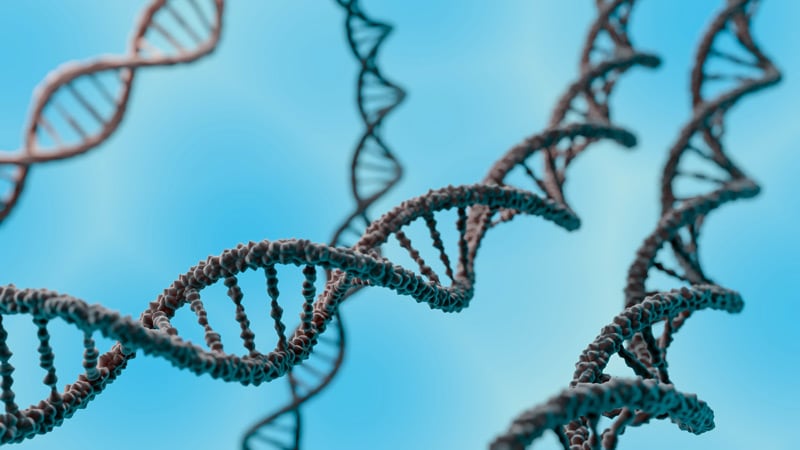This study was published as a preprint and has not yet been peer reviewed.
Key Takeaways
-
An artificial intelligence (AI)–driven approach to meta-analyses of microarray data can help identify top gene candidates for Alzheimer’s disease (AD) to inform model development or future therapeutics.
-
Top gene candidates in the frontal cortex included specific subunits of mitochondrial complex V (ATP5J, ATP5L, and ATP5H).
-
The top candidate in the cerebellum included the cholesterol biosynthesis and catabolism-related gene SC5D.
-
Pathophysiologic mechanisms in AD may be brain-region–specific, as there was no overlap in dysregulated pathways between the frontal cortex and the cerebellum.
Why This Matters
-
Although meta-analysis of microarray data can be helpful to understand gene expression in different diseases, it has limitations that an AI approach can help overcome.
-
Few meta-analyses have sought to identify novel gene candidates in AD.
-
A better understanding of novel gene candidates in AD can inform the development of new animal or cell models of the disease or targets for therapy.
Study Design
-
A meta-analysis was conducted of microarray data from the frontal cortex (two datasets) and cerebellum (one dataset) of patients with AD compared with healthy controls.
-
An unsupervised machine-learning approach (principal component analysis) was used to begin to identify top gene candidates through the highest contribution to between-group separation between individuals with AD and healthy controls.
-
STRING v11 was used to analyze gene candidates that could be biologically relevant and had established interaction networks.
-
Supervised machine learning was used to identify top dysregulated pathway candidates and top candidate genes.
-
The top 1000 genes for each region were compared to determine whether there was overlap in dysregulated genes between brain regions.
Key Results
-
Four dysregulated pathways were identified with the frontal cortex, including
-
Mitochondrial energy, ATP, and oxidative phosphorylation
-
Signaling
-
Metabolic processes
-
Mitochondrial cellular biosynthesis
-
-
The AI-driven approach identified “mitochondrial energy, ATP, and oxidative phosphorylation” as the top-performing model. Top genes included ATP5J, ATP5L, and ATP5H, all which help encode mitochondrial complex V subunits.
-
Three dysregulated pathways were identified in the cerebellum, including
-
Sterol and steroid metabolic processes
-
Intracellular transport
-
Development and differentiation
-
The AI-driven approach identified “sterol and steroid metabolic processes” as the top-performing model. The top gene was cholesterol biosynthesis and catabolism-related SC5D, involved in the conversion of lathosterol into 7-dehydrocholesterol.
-
The frontal cortex and cerebellum had no overlap of dysregulated pathways, suggesting that pathophysiologic mechanisms may be regionally specific in AD. The 32 genes that did overlap were most likely noise.
-
There are some inherent challenges associated with meta-analysis of microarray data, although the study’s AI-driven approach was specifically designed to help correct for at least some level of these issues:
-
The difficulty associated with successfully analyzing high-dimensional and complex human transcriptomic datasets
-
The difficulty of sorting through hundreds to thousands of identified dysregulated genes to determine optimal targets for further study
-
-
Genes identified as dysregulated in AD through meta-analyses may not always be good target genes, even when AI-driven approaches are employed.
-
The authors declared no conflicts of interest.
-
A Macquarie University Research Acceleration Scheme Grant awarded to two authors supported this research.
Limitations
Disclosures
This is a summary of a preprint research study, “Artificial intelligence-driven meta-analysis of brain gene expression data identifies novel gene candidates in Alzheimer’s Disease,” written by Caitlin A. Finney from Macquarie University, and colleagues. This study from MedRxiv is provided to you by Medscape. This study has not yet been peer reviewed. The full text of the study can be found on medRxiv.org.
For more news, follow Medscape on Facebook, Twitter, Instagram, YouTube, and LinkedIn
Source: Read Full Article
-
